Artists
Ivan Le Lorraine Albright (1897-1983) was born to a well regarded Impressionist painter, but you wouldn’t likely guess that from his artistic style. Critics and scholars alike struggle to define Albright’s work, often portraits done in painstaking detail that appear to be in a state of active decay — no small part of the reason MGM selected Albright and his twin brother Malvin (or “Zsissly”) to make the Picture of Dorian Gray portraits for the 1943 film adaptation of the Oscar Wilde novel.
Albright was born just outside of Chicago where, for the first part of his life, he and Malvin were used as models for their father, Adam’s, paintings. Eventually Adam started to give the boys art lessons, bringing them on trips to the Art Institute of Chicago to learn from the masters firsthand. In 1918 Albright was enlisted as a medical illustrator for the U.S. Army working in France, rendering surgeries and wounds in ink and watercolor. Upon his return to the States, Albright decided to pursue an artistic career in earnest, studying painting at the School of the Art Institute of Chicago. After graduating, Albright and Malvin joined their father in the Methodist church in Warrenville, Illinois, he’d converted into a studio.
The 1930s saw the emergence of Albright’s signature style. He would produce highly-detailed preparatory sketches in charcoal, map out specific color palettes for different objects within the same painting (for which he mixed his own colors), and spent years, sometimes over a decade, on a single work, his process of layering with endless thin brushstrokes sometimes resulting in completing just half a square inch in an entire day. The results were dark and intricate, like crystallized oil spills. “A painting should be a piece of philosophy,” he posited. “Or why do it?”
Bernece Berkman-Hunter (1911-1988) used a unique blend of cubism and expressionism in her paintings and prints to depict themes of social justice, urban life, and industrialization in Chicago. Born to an American mother and Russian immigrant father, Berkman began studying at the School of the Art Institute of Chicago in 1927 and then in the studio of Todros Geller (1889-1949), under whose guidance her Jewish and activist identities became more intertwined and apparent in her art. Berkman worked for the painting and graphic arts divisions of the WPA Federal Art Project during the 1930s. She often exhibited with radical and Jewish artist groups in Chicago, and was one of fourteen artists chosen to contribute a print to the Biro-Bidjan Portfolio (c. 1937-1938).
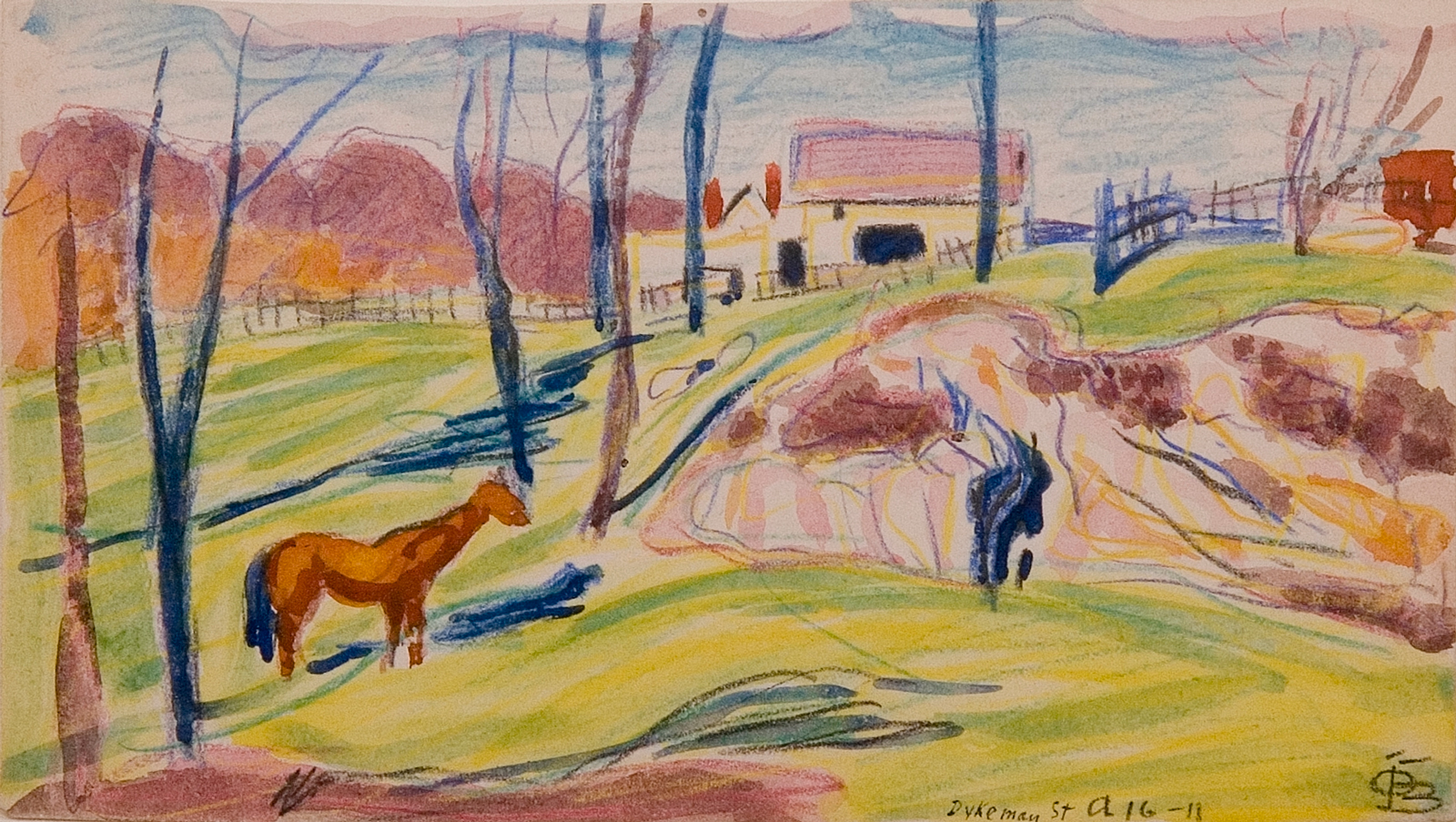
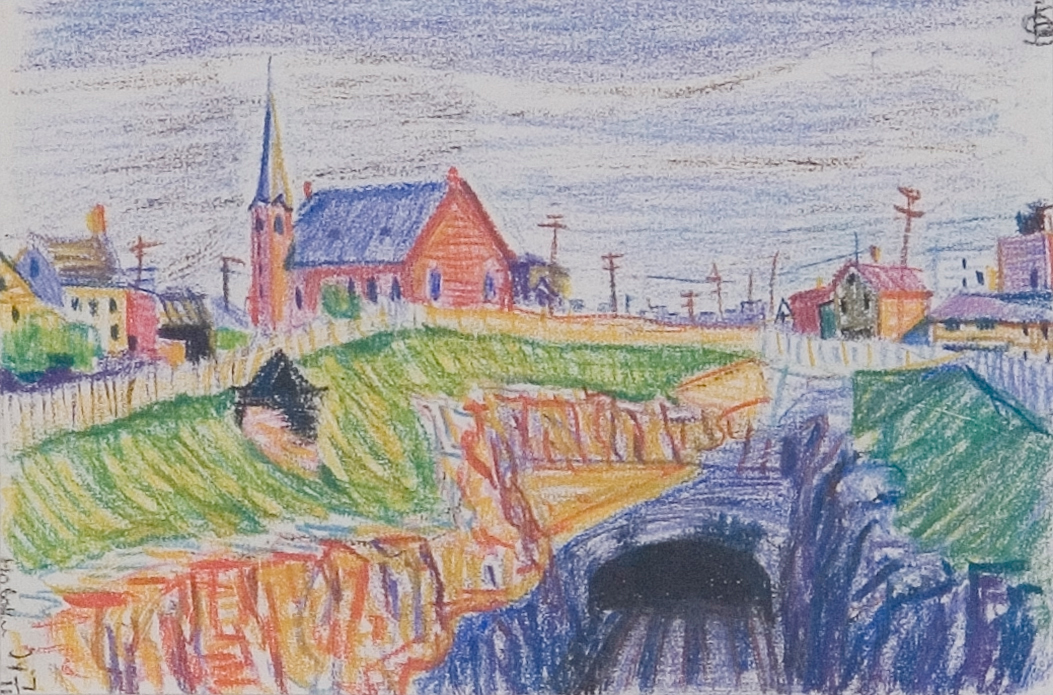
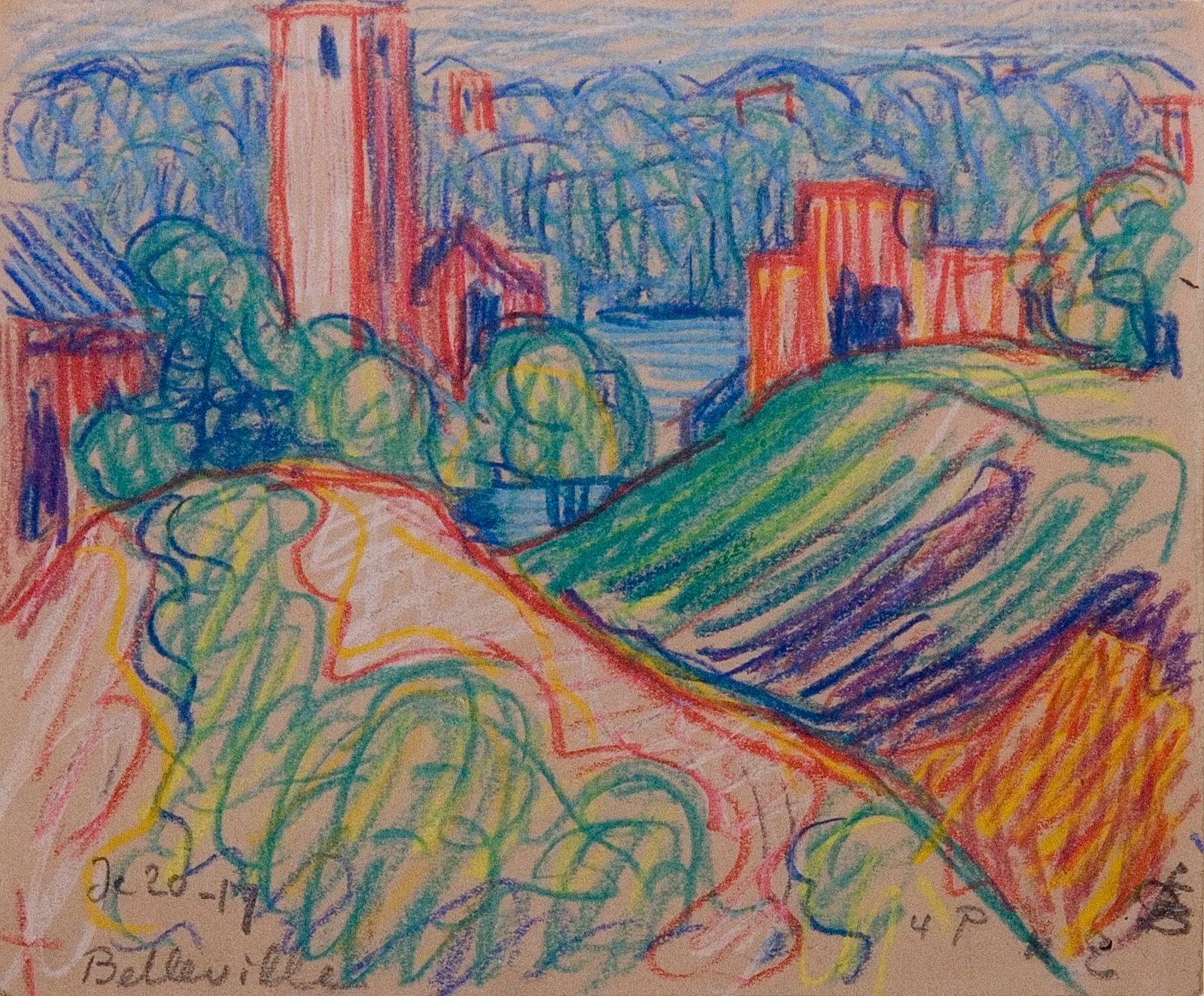
Oscar Bluemner (1867-1938) was a painter best known for his bold color work and dreamlike landscapes that verged on abstraction. He is considered one of the early pioneers of modernism in America. Born in Germany and following in his father and grandfather’s footsteps, Bluemner originally trained as an architect at the Royal Academy of Design in Berlin. He immigrated to the United States in 1892 to further his career in Chicago and New York City but after a couple decades became disillusioned with architecture and turned his focus to painting. In 1908 he met Alfred Stieglitz, and in 1912 embarked on a 7-month trip to Europe where he absorbed trends in Fauvism, Expressionism, Futurism, and Cubism that influenced the development of his own signature colors — he referred to himself as “the Vermillionaire” — and strong, angular lines. In 1913 Stieglitz featured Bluemner’s work at the Armory Show and gave him a solo show in 1915 at the 291 gallery. After his wife’s passing in 1926, Bluemner’s work took on a darker, more symbolic tone that leaned heavily on his theories of color and emotion. Though struggling to make ends meet up to his death, Bluemner continued to be featured in prominent exhibitions like the first Whitney Biennial in 1932 and a 1935 solo show at the Marie Harriman Gallery in New York.
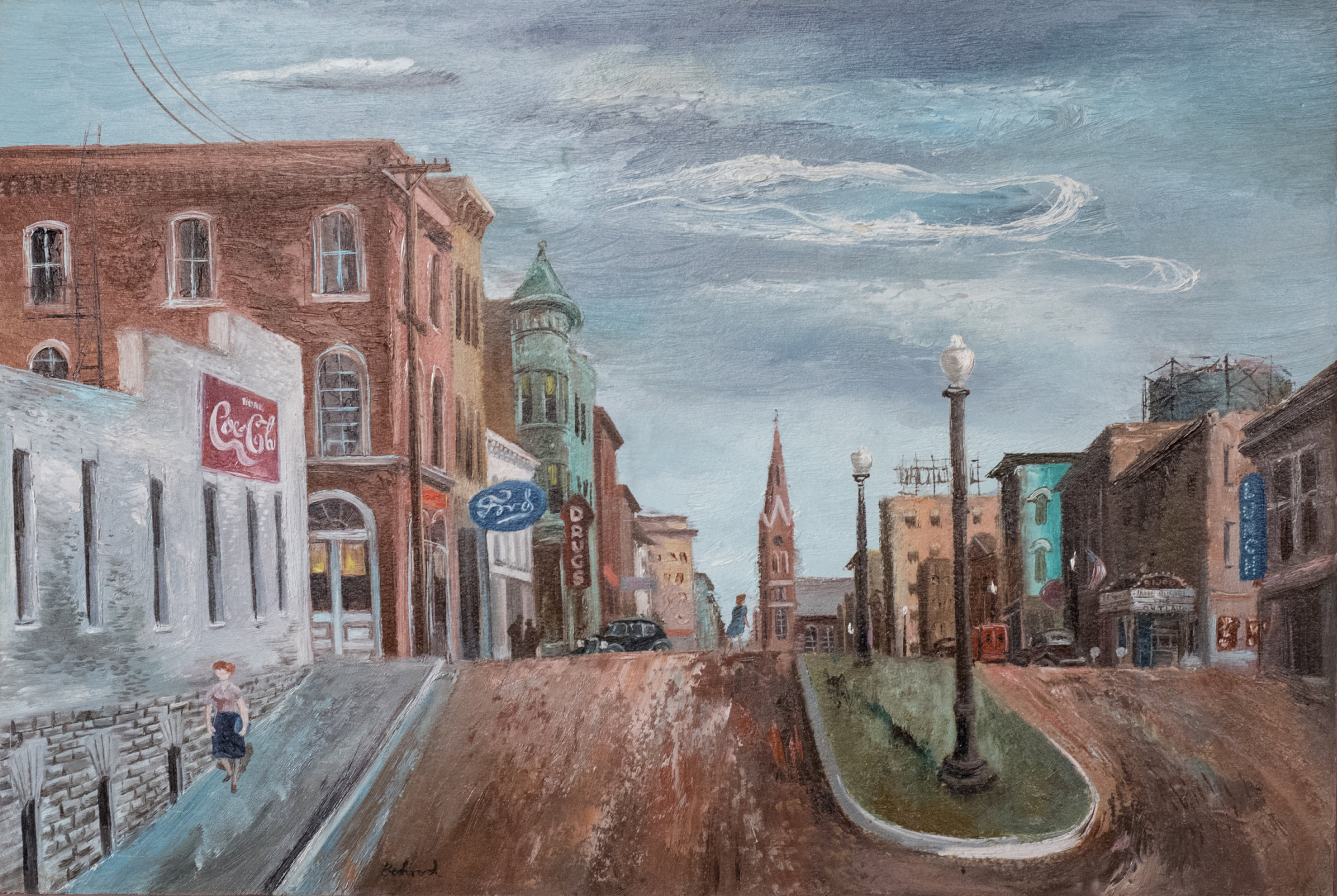
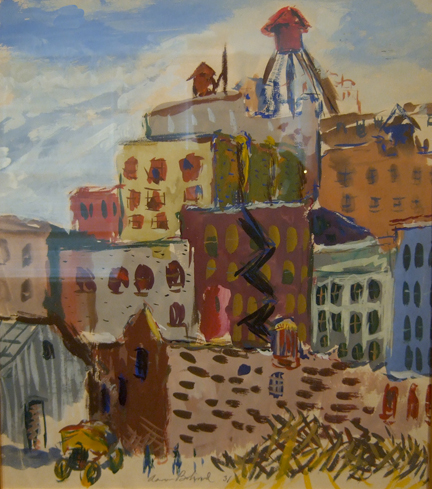
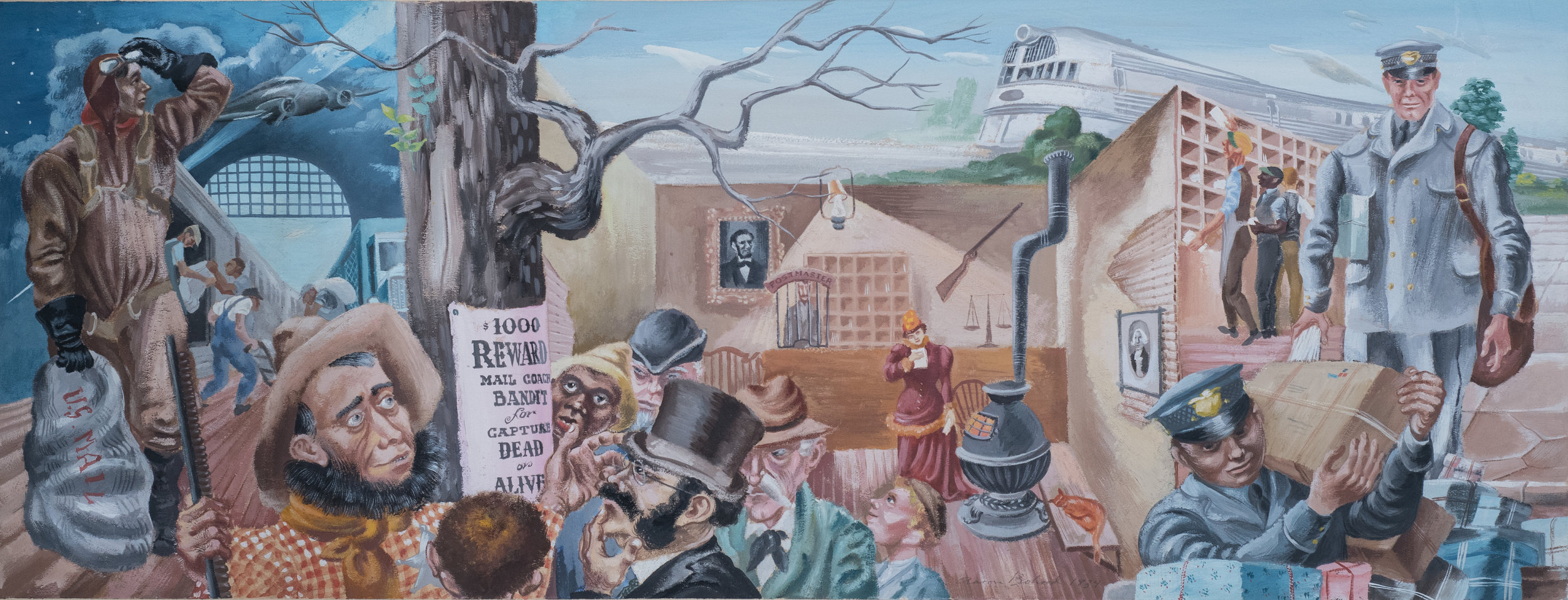
Aaron Bohrod (1907-1992) was a painter, printmaker, and ceramist born on Chicago’s West Side, the son of Jewish immigrants. His early years held little in the way of formal artistic training outside of standard public school classes, and instead involved various types of self-education: first copying comics from the newspaper, then, later on, anatomical illustrations from his brother’s medical school textbooks. Bohrod entered the School of the Art Institute of Chicago in 1927 with his aims set on becoming a commercial artist. Two years later he left Chicago for New York to pursue fine art at the Art Students League instead. In New York, Bohrod studied lithography and painting under instructors like John Sloan, a prominent member of the Ashcan school.
Bohrod returned to Chicago after two years at the League, turning his eye to urban street scenes, and finessing his tight, detailed painting technique. In 1936 Bohrod was awarded a Guggenheim Fellowship that allowed him to travel and record regionalist scenes across the country. During World War II Bohrod became an artist for the United States Army Corps of Engineers’ War Art Unit, and subsequently a war correspondent for Life magazine. When he returned to the United States, Bohrod’s art took a surreal turn — his paintings became even more hyper-realistic, mostly still lives done in the trompe l'oeil style, and he began making ceramics in collaboration with F. Carlton Ball. In 1948 Bohrod accepted a position as the artist in residence at the University of Wisconsin-Madison, where he remained until 1973.

Harriette Bowdoin (1880-1947) was an Impressionist painter and illustrator born in South Hadley Falls, Massachusetts. Bowdoin moved to New York City at a young age to study with Henry Snell, a prominent Impressionist, and Elliott Dangerfield, a landscape artist. Bowdoin traveled and trained in Europe, where she befriended American artist Jane Peterson while they were both studying under Frank Brangwyn in London. Bowdoin returned to New York sometime prior to 1911, continuing to develop her distinct Impressionist style of bold color and quick, bright brushwork. Throughout the 1910s and 20s, Bowdoin exhibited pieces with the Art Institute of Chicago, the National Academy of Design, and the Society of Independent Artists.
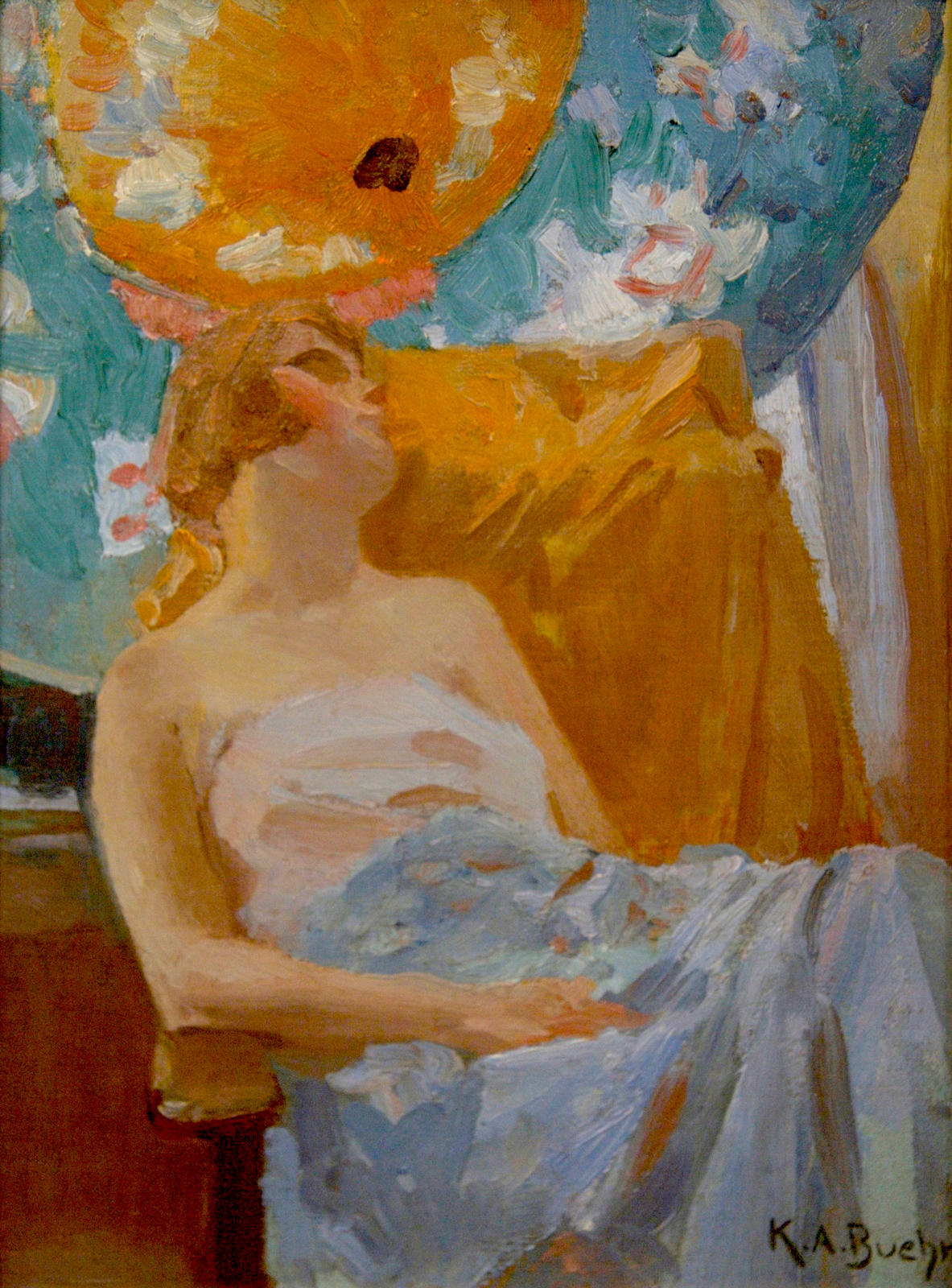
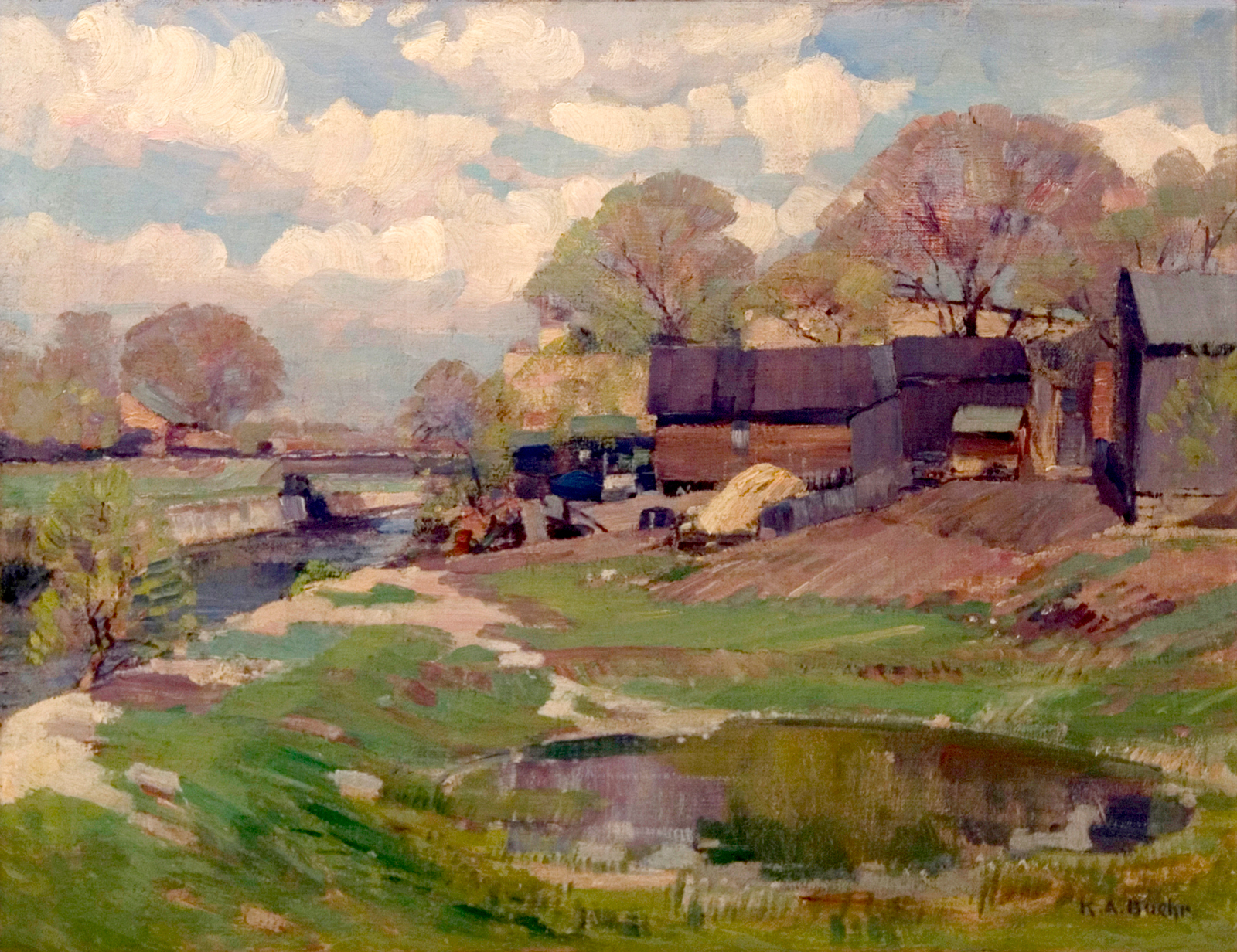
Karl A. Buehr (1866-1952) was an Impressionist painter well-regarded for his colorful, light-filled portraits of women beside verdant gardens. Buehr was born in Germany and moved with his family to Chicago in the early 1880s. He started his artistic training at the School of the Art Institute of Chicago in 1888; after graduating, he became an instructor at the school until 1897. Buehr briefly interrupted his artistic pursuits to fight in the Spanish-American War. He married the painter Mary Hess just after his service had ended.
While he experimented with Impressionist techniques in his early career, Buehr didn’t become a full-fledged Impressionist until he traveled to Paris in 1900 to study at the Académie Julien. For the next fourteen years, up until the outbreak of World War I, Buehr traveled throughout Europe. In 1905, he took up studies in London with Frank Brangwyn; a few years later, in 1909, he joined a colony of American Impressionists living in Giverny, France — including Louis Ritman, Lawton Parker, Friederick Frieseke, and Richard Miller. Buehr returned to Chicago in 1914 to continue teaching at the School of the Art Institute. He taught briefly at both Stanford University and the University of California Berkeley in the late 1920s. Buehr continued painting portraits and landscapes — including of his travels to Vermont, New York, and Taos, New Mexico — for the remainder of his career.
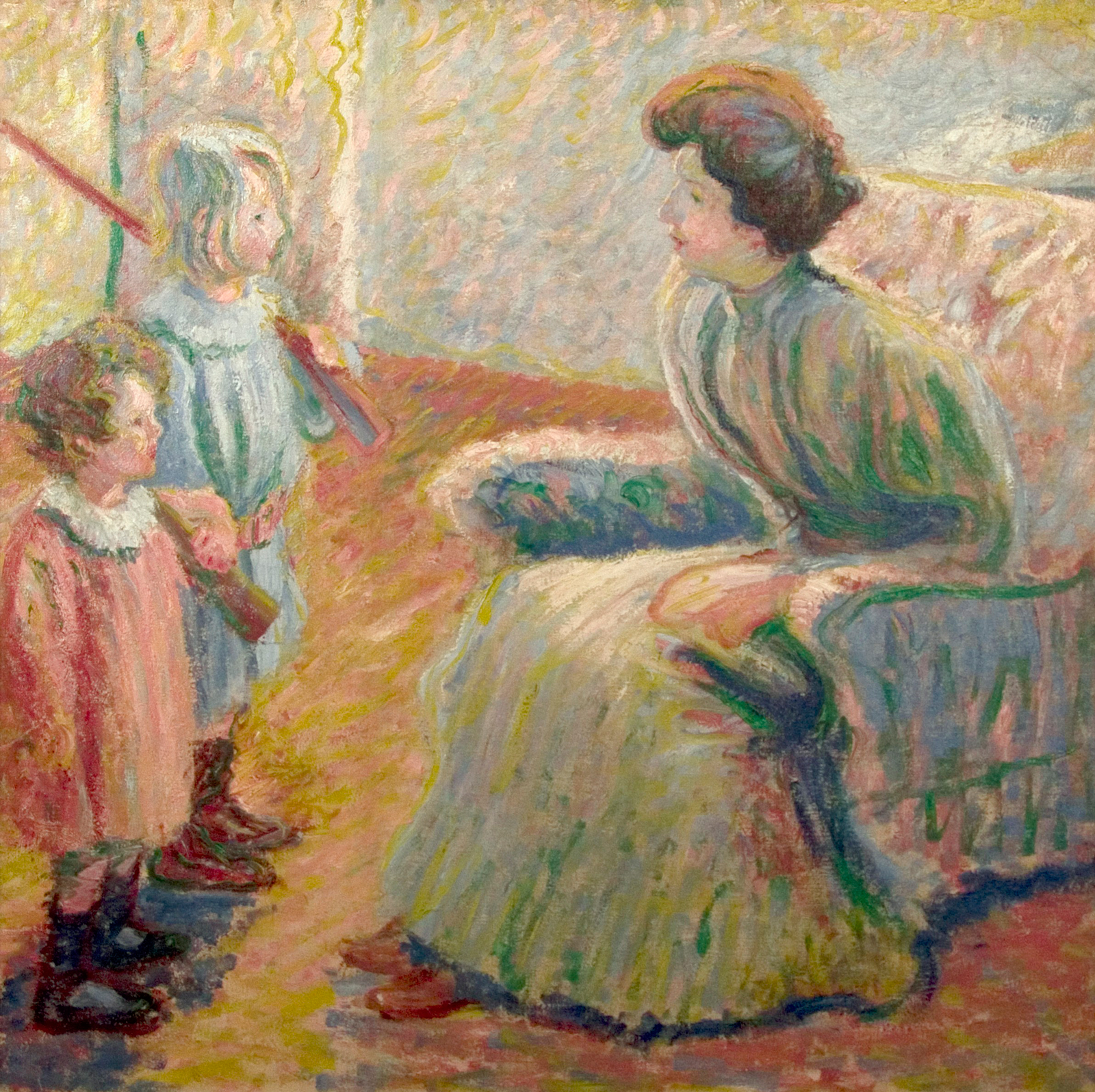
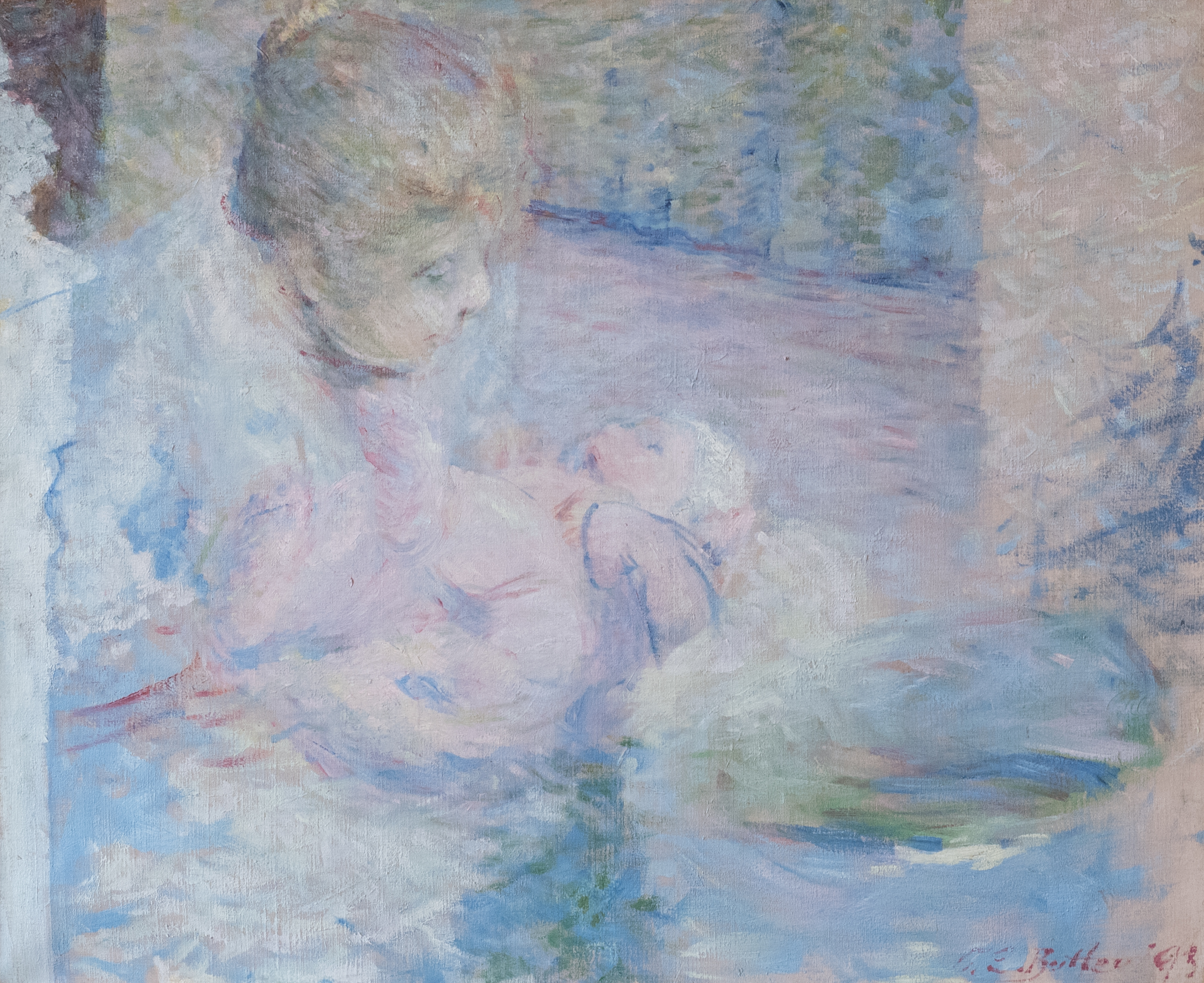
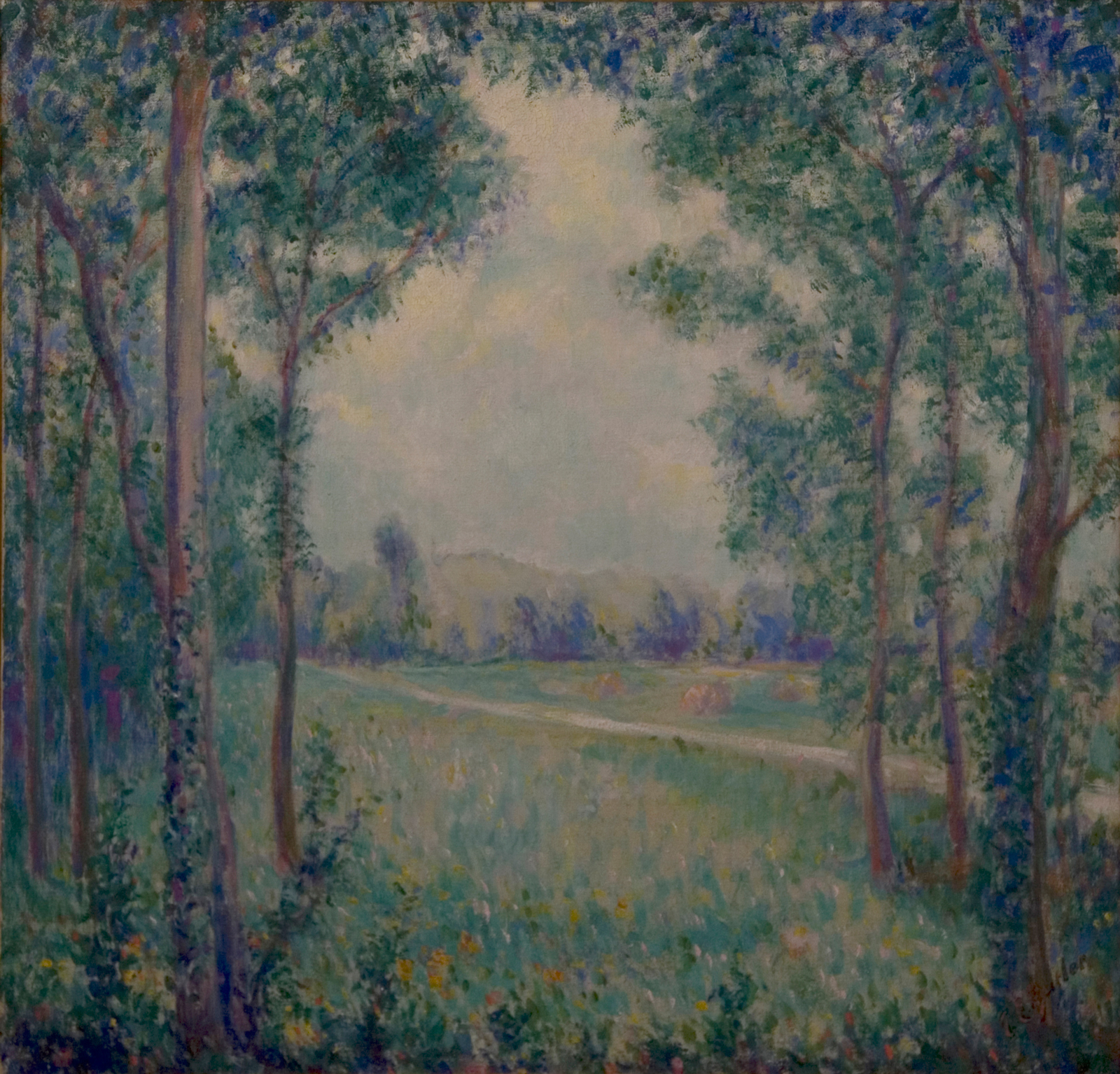
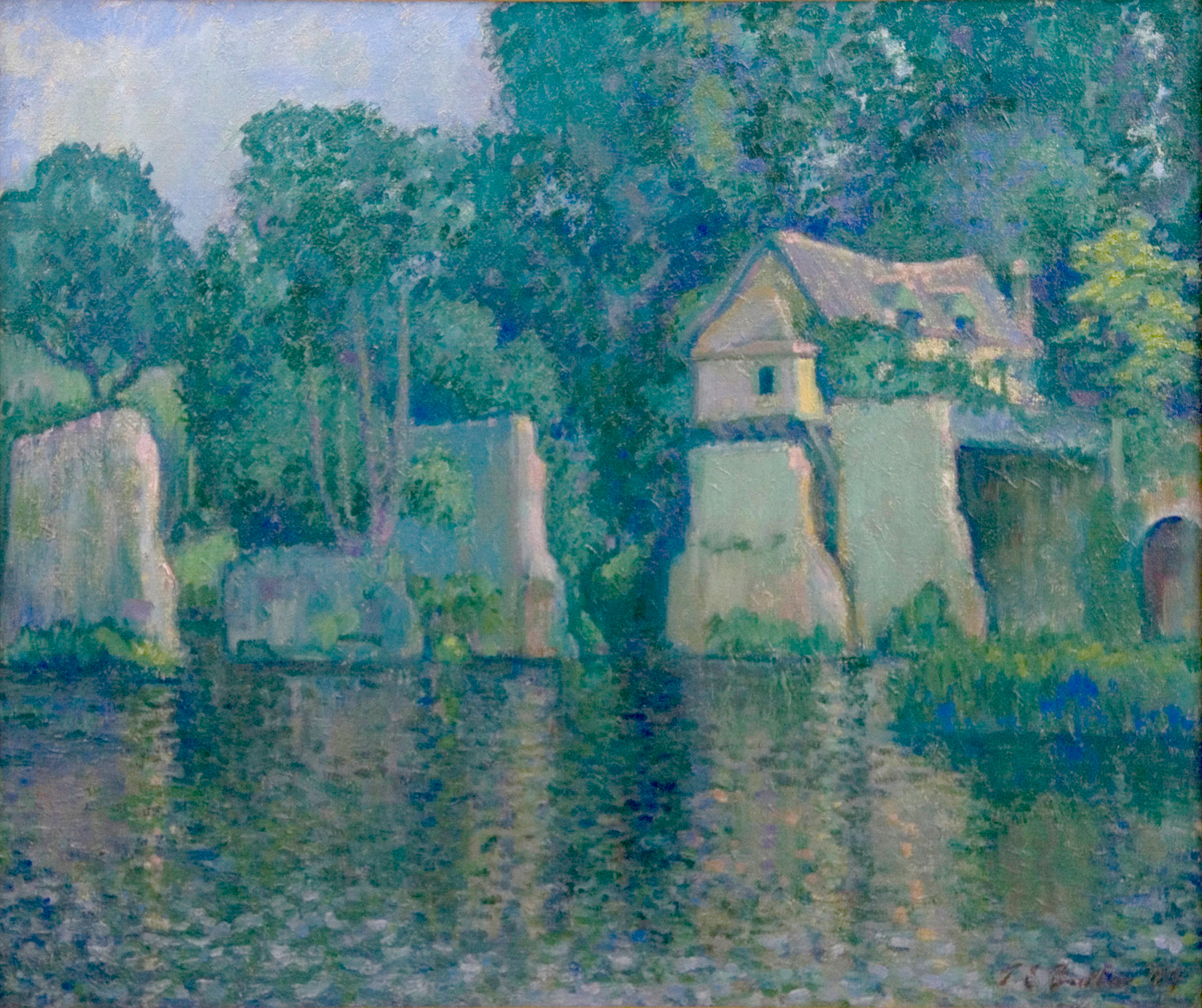
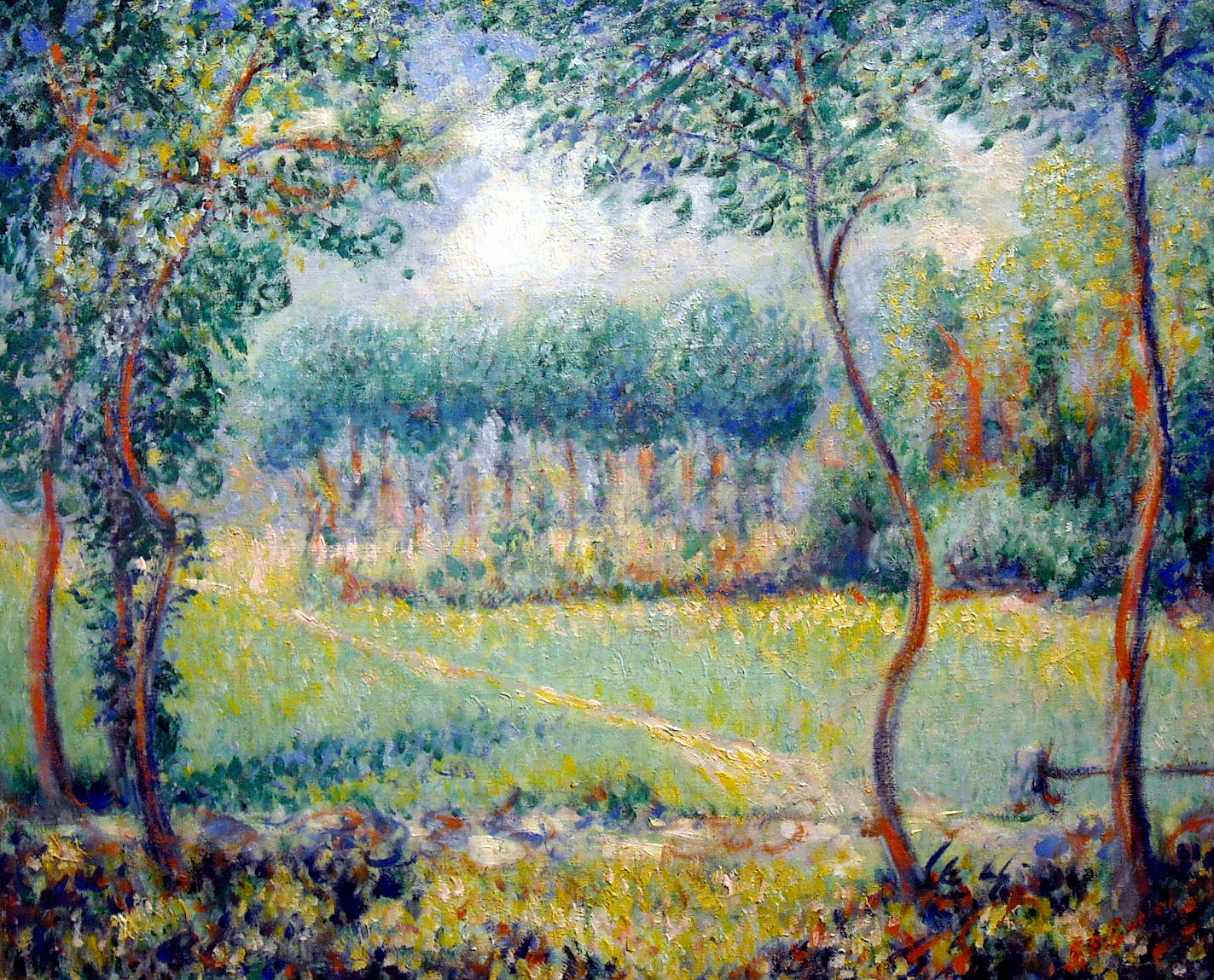
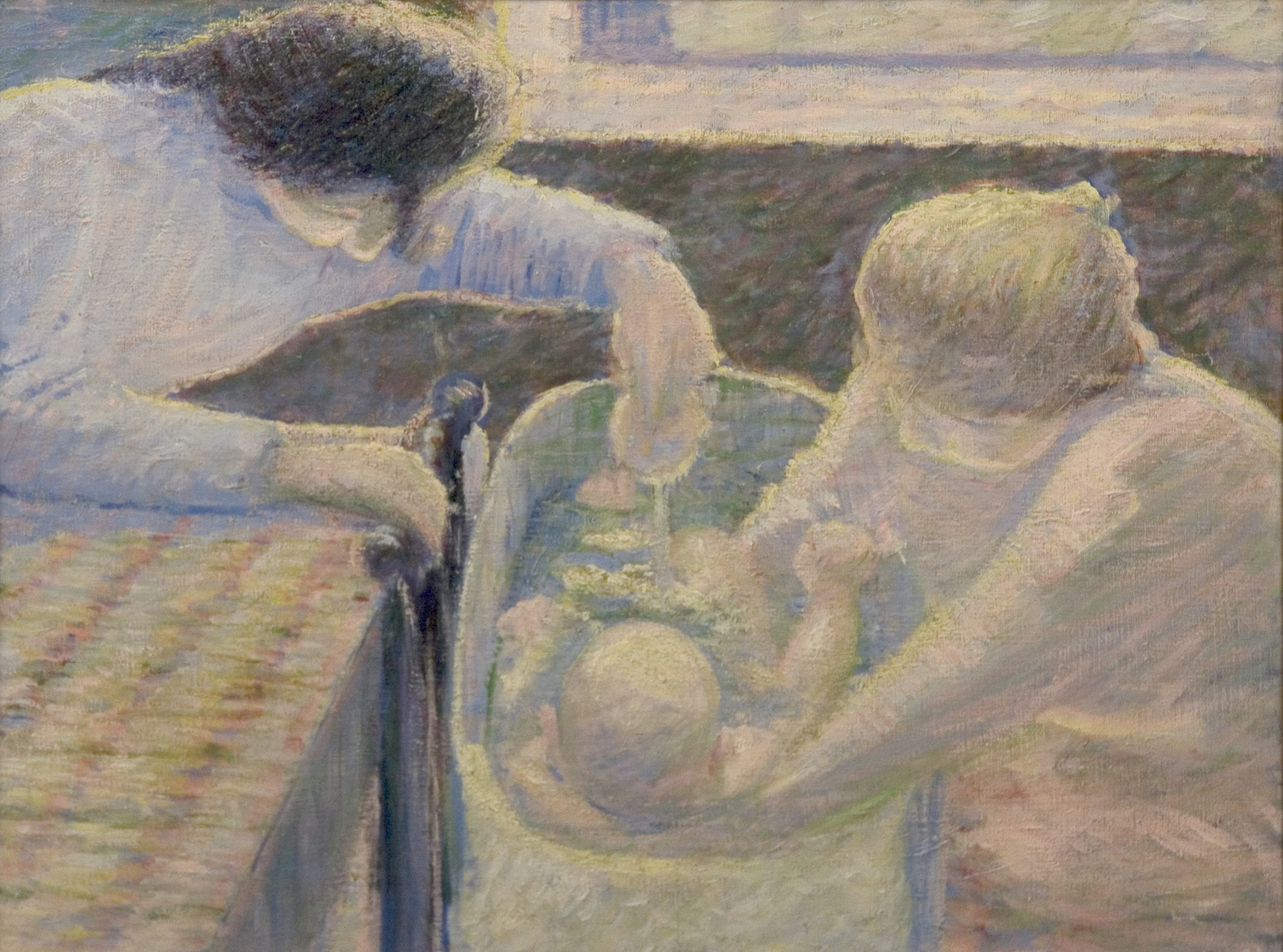
Theodore Earl Butler (1861-1936), often remembered for his marriage to Suzanne Hoschede-Monet, stepdaughter of and model for Claude Monet, was a formidable painter in his own right, fusing elements of Impressionism and Post-Impressionism into his work. Born in Columbus, Ohio, Butler took art lessons growing up with local artist Albert C. Fauley. In 1882 he departed for New York to study at the Art Students League, where he studied under William Merritt Chase. Three years later, he set sail for Europe.
For the next few years Butler studied at various private studios and schools in Paris, including the Académie Julian. He won an honorable mention at the Paris Salon in 1888. That same year, he met Claude Monet; gradually, he worked his way into Monet’s inner circle, one of few American artists to do so. Under Monet’s guidance, Butler started to develop his style of Impressionism, painting portraits and garden scenes. Later on, he would also incorporate aspects of the Fauvism into his work, especially the bright palettes.
Butler married Suzanne Hoschede-Monet in 1892. The couple had two children, and Butler changed his artistic focus to indoor scenes of the family. After Suzanne’s passing in 1899, Butler briefly moved back to New York City. He returned to France in 1900 to marry another of Claude Monet’s stepdaughters, Marthe, and to establish a home in Giverny, a place American artists frequented. Exhibitions and commissions would occasionally bring him back to the United States, including the famed Armory Show of 1913.
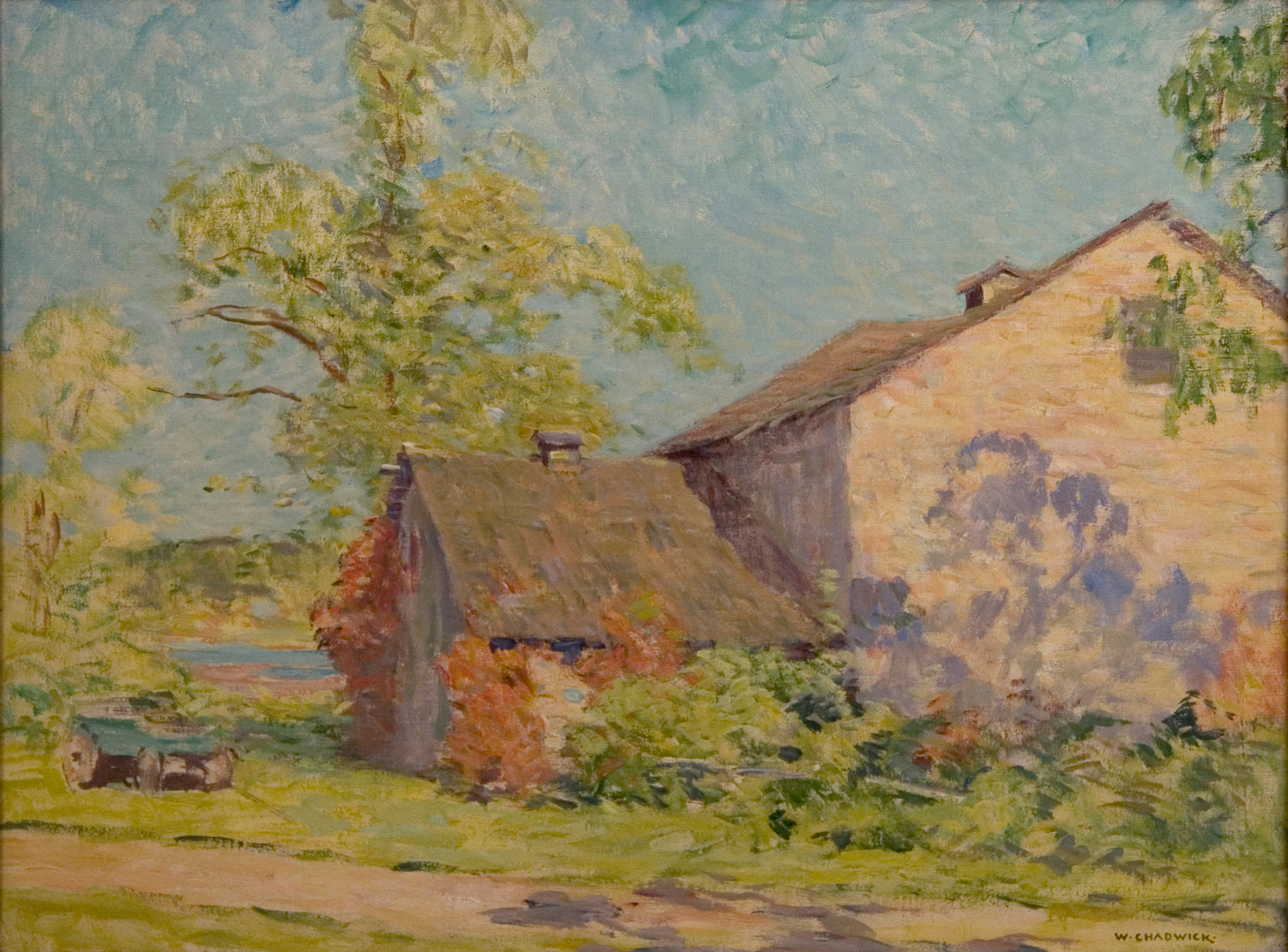
William Chadwick (1879-1962) was part of a second generation of American Impressionists, known for his subtle palettes and light-filled canvases. Born in England, Chadwick immigrated with his family to Holyoke, Massachusetts in 1882. He left for New York City after graduating high school to study at the Art Students League with artists like John Henry Twachtman and William Merritt Chase. In 1902 Chadwick visited Old Lyme, Connecticut — the town would come to be an important artist colony for American Impressionists (it is often referred to as the “American Giverny”), and at various points was home to artists like Robert Vonnoh and First Lady Ellen Wilson. During his time there, Chadwick’s artistic focus shifted from portraiture to plein air landscapes.
For the next few years following his visit, Chadwick split his time between Old Lyme, where he spent summers, and New York City. In 1903 he showed his work with the Society of American Artists, marking his professional artistic debut. Between 1912 and 1915 he traveled throughout Europe, including a lengthy stay in Italy. Upon returning to the United States, Chadwick made a permanent home in Old Lyme — though he would frequently travel to New England, and held his first solo exhibition at the Telfair Academy in Savannah, Georgia, where he also taught for two years, Old Lyme would stay Chadwick’s base for the rest of his life, where he remained a central figure in the continuation and growth of the colony.
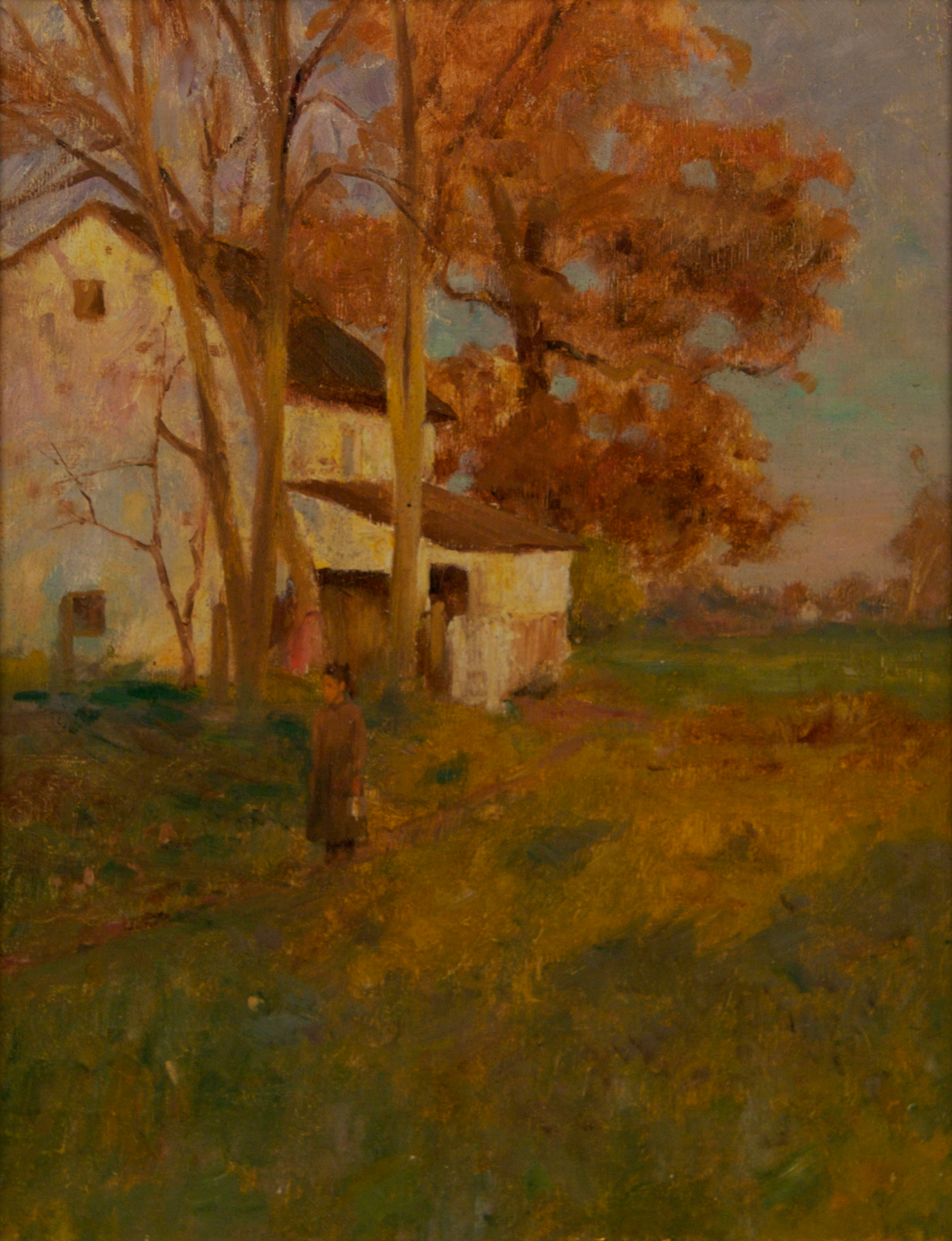
Born in Brooklyn, Impressionist Walter Clark (1848-1917) led a varied life prior to pursuing his artistic career. He originally studied to become an engineer at the Massachusetts Institute of Technology, traveled extensively through Europe and Asia after his graduation in 1869, and was a sheepherder in Wyoming for a short time. He eventually returned to New York in 1876, studying first at the National Academy of Design, then joining the Art Students League where he occupied a studio adjacent to George Inness. Inness, John Henry Twachtman, and Joseph DeCamp would all become significant influences on Clark’s art, which over the course of the 1880s and 1890s shifted from Tonalist-style pastoral landscapes to something more Impressionist in its nature. Clark spent his summers at East Coast art colonies in places like Old Lyme, Connecticut, and Ogunquit, Maine. His exhibition history with the National Academy of Design spanned multiple decades, and his art was featured at several major expositions, including the 1893 Columbian Exhibition in Chicago.



Not much is known about the life of abstract artist Gerald Coarding. Born in Fort Wayne, Indiana, he studied at the School of the Art Institute of Chicago and at various points under Hans Hoffman and Fernand Leger. After fighting in World War II, Coarding secured a job at Chase Manhattan Bank in New York, where one of his paintings was selected for their permanent collection. In addition, Coarding’s work was exhibited at the Whitney and the Art Institute of Chicago, as well as the Noyes Museum of Art in New Jersey and the Janet Fleisher Gallery in Philadelphia.
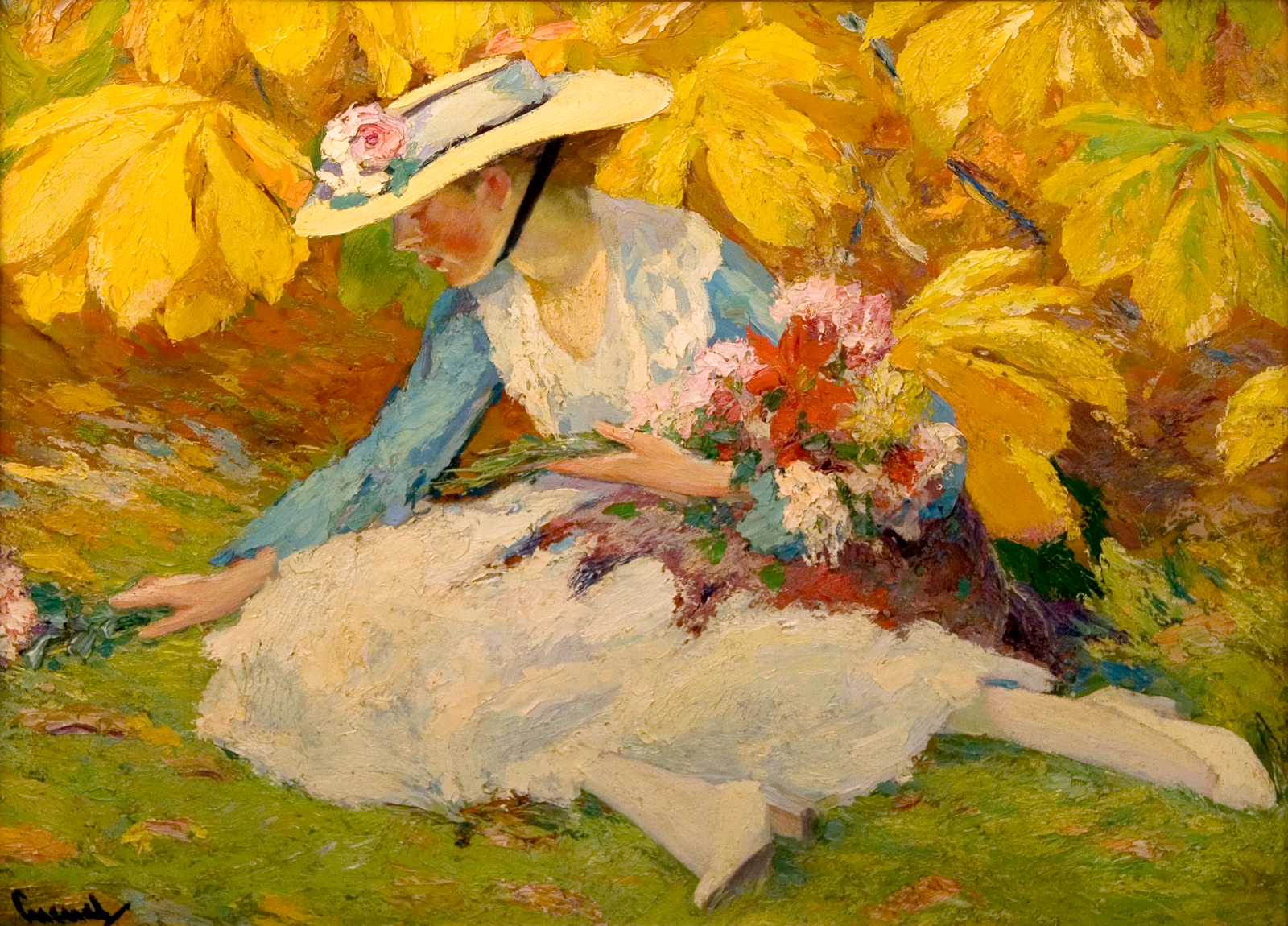
Edward Alfred Cucuel (1875-1954) was a newspaper illustrator turned Impressionist, known especially for his vibrant palettes and portraits of women in dappled landscapes. Born in San Francisco, Cucuel began his training at the San Francisco School of Design in the late 1880s; his father was a newspaper publisher, and the young Cucuel worked for several newspaper art departments in his teenage years. Cucuel moved to Paris in 1892 to continue his artistic studies at the Academy Julian and the Ecole des Beaux-Arts. He returned to the United States in 1896, working for half a year as an illustrator in New York, then left once more for Paris. After a couple of years spent painting in that city, Cucuel struck out to travel through France, Italy, and Germany to study the old masterworks in person. In 1907 he moved to Munich to establish a more permanent residence, training with Leo Putz to more seriously develop his Impressionist painting practice. Cucuel remained in Germany until 1939, gradually gaining recognition, with his works being shown in Paris salons and at the Art Institute of Chicago. The outbreak of World War II forced Cucuel to come back to the United States; he lived in Pasadena for the remainder of his life.
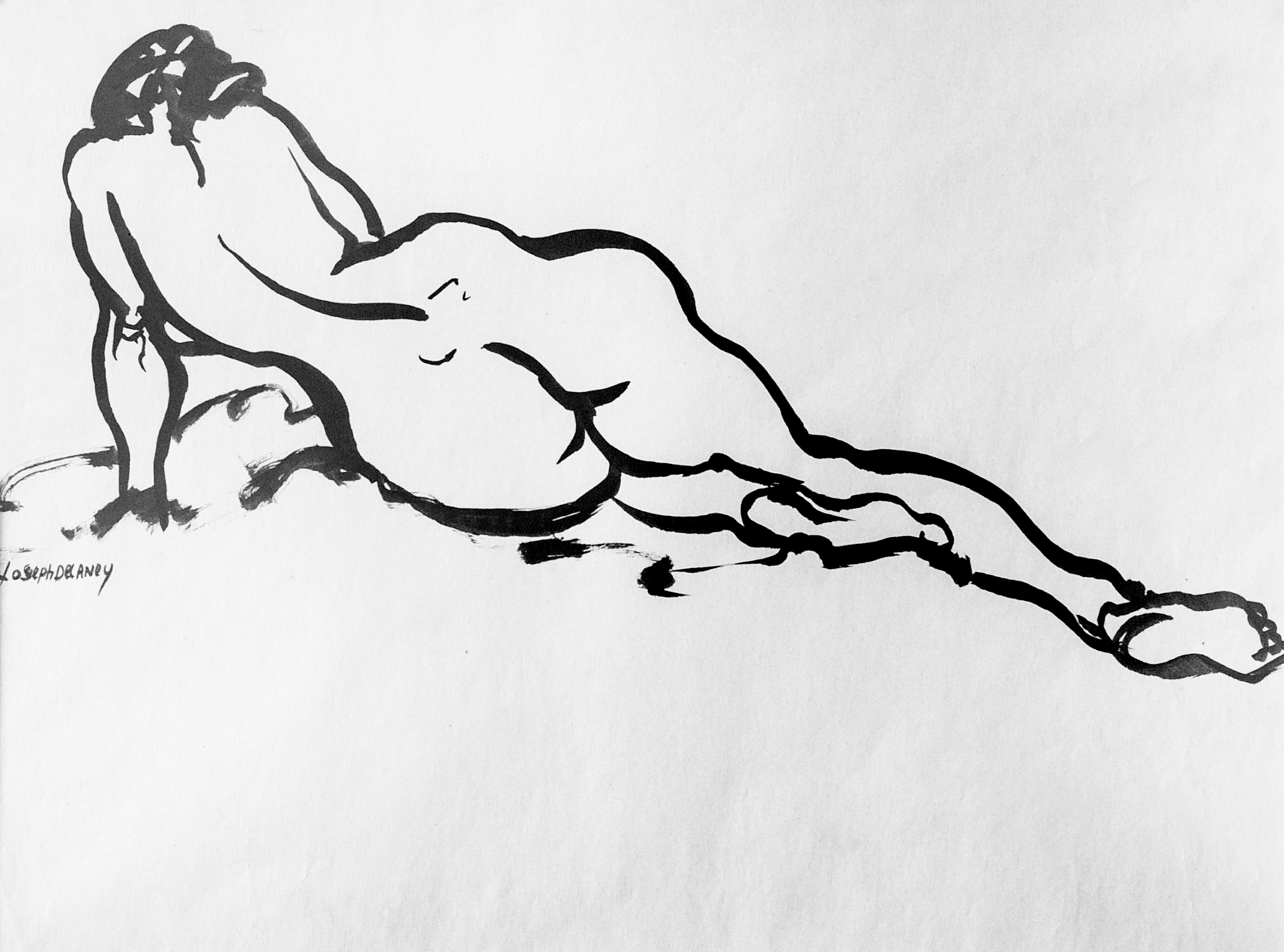
Joseph Delaney (1904-1991) was a Black artist born to a Methodist minister father in Knoxville, Tennessee. Joseph and his brother Beauford revealed artistic inclinations early on, drawing while they were bored in Sunday school and taking art lessons with local artist Lloyd Branson. The brothers set out on their own in the 1920s — Joseph spent several years wandering and working odd jobs, and served a three-year stint in the Illinois National Guard. He eventually landed in New York City in 1930, where he enrolled at the Art Students League, taking classes with Thomas Hart Benton — who would have a profound influence on his art — in the same cohort as Jackson Pollock. Delaney spent the next fifty years in New York City. He was part of the Harlem Renaissance movement, a recorder of ordinary urban life who made quick sketches that captured the movement and dynamism of the city, later developing them into portraits of individuals and crowds — in the streets, on parade, in parks, on trains, and in bars and clubs. Delaney was employed with the WPA for several years in the 1930s illustrating and painting murals. He exhibited yearly at the Washington Square Outdoor Art Show, and showed his work at the Metropolitan Museum of Art and the National Academy of Design. Delaney returned to Knoxville in 1986 as an artist-in-residence at the University of Tennessee, which held his first retrospective.
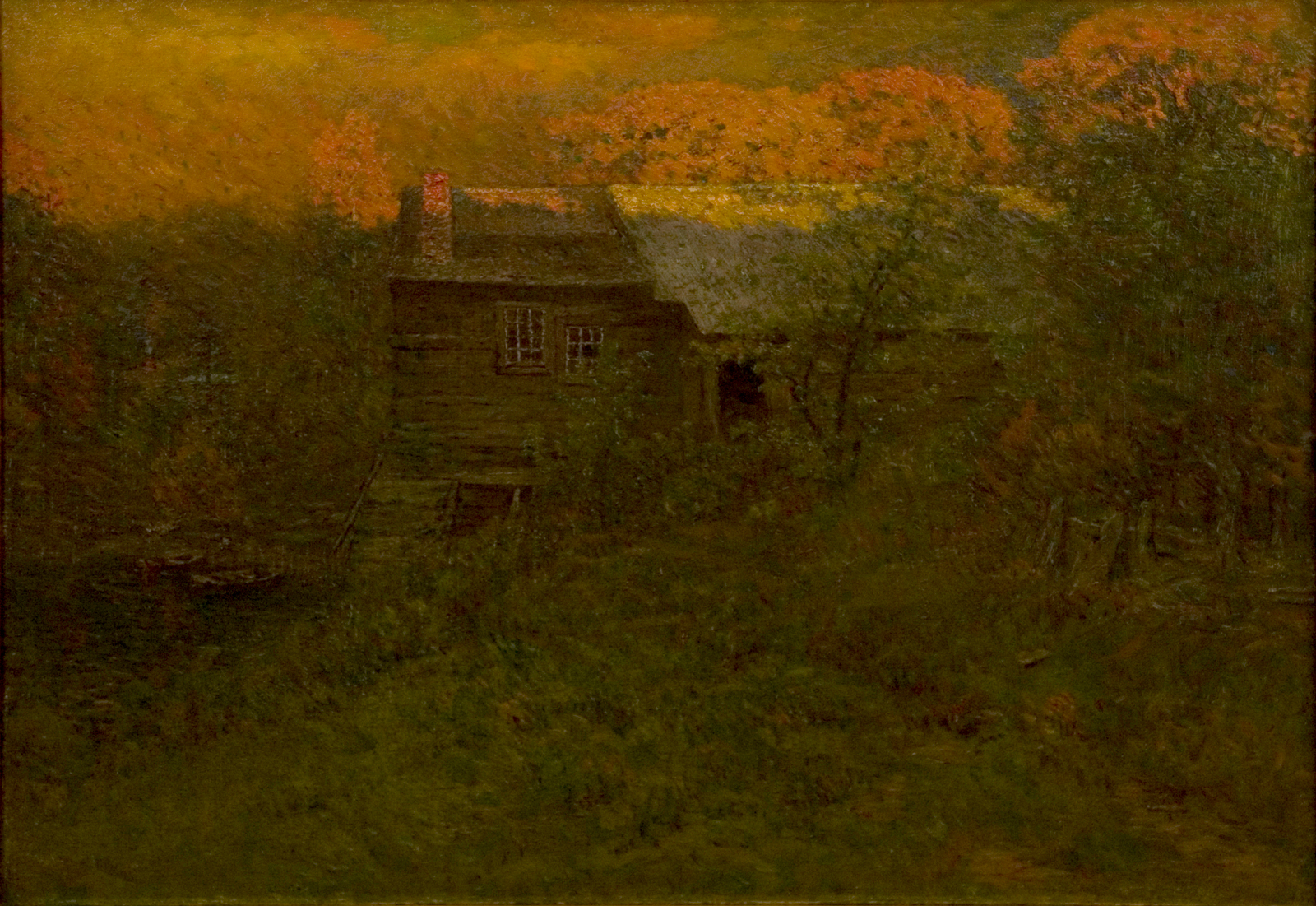
John Joseph Enneking (1841-1916) is sometimes called America’s first Impressionist. Born in Minster, Ohio, Enneking moved to Cincinnati at age 16 after both of his parents died and began his formal artistic training at Mount St. Mary’s College. His studies were interrupted by the outbreak of the Civil War — he joined the Union Army, returning to Cincinnati after being injured and subsequently discharged. After a lengthy recovery, Enneking moved first to New York in 1864, where he lived only briefly, then settled in Boston, where he resumed his artistic studies, learning lithography and painting under the tutelage of Samuel Gerry. In 1872, Enneking departed for a four-year trip to Europe. He studied first at the Munich Academy of Germany and then in Paris with Leon Bonnat and Charles Daubigny, also working alongside Jean Millet, Claude Monet, Camille Pissarro, and Camille Corot. This group of Tonalists and Impressionists would deeply influence Enneking’s art.
He returned from Europe to establish a permanent residence in Hyde Park, just outside of Boston. Enneking was a fixture in the Boston art scene, becoming especially well known for his Tonalist twilight images of New England landscapes. He exhibited locally as well as at the National Academy of Design, the Pennsylvania Academy of Fine Arts, and the Art Institute of Chicago. Enneking started spending summers in North Newry, Maine, sometime in the 1880s, with frequent sojourns to the White Mountains of New Hampshire, where he would paint en plein aire. Enneking’s reverence for the land was deep, and extended beyond painting to environmental conservation — he was even elected to be a Park Commissioner in Boston.
